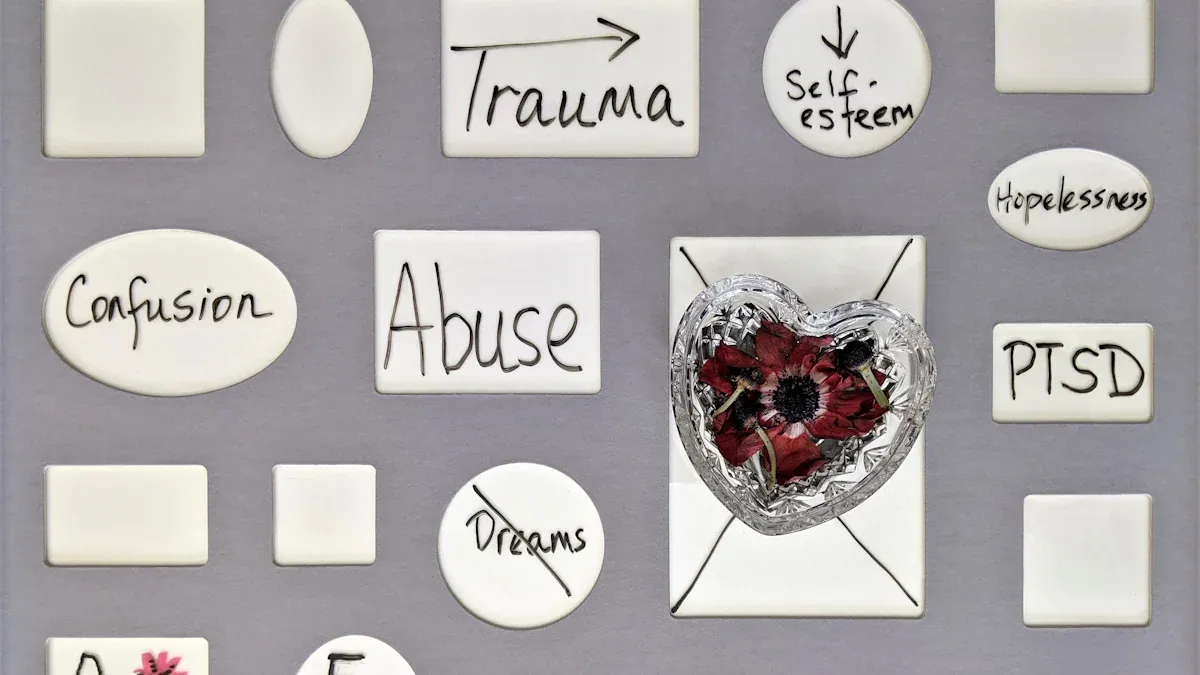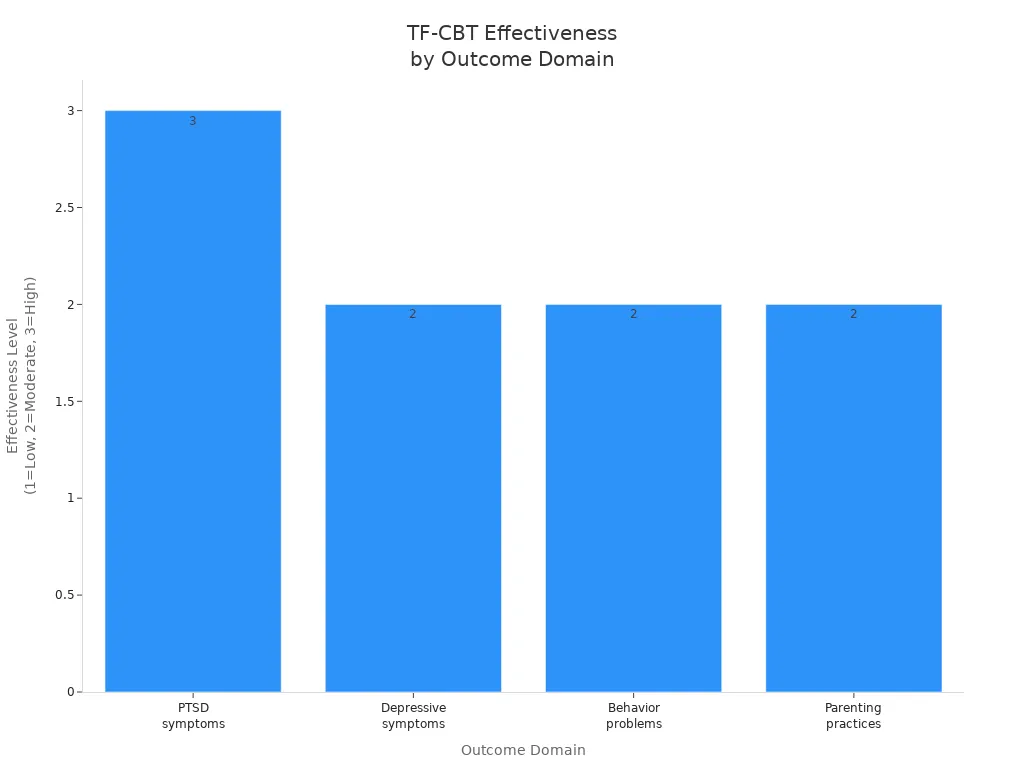Which Therapy Works Best for Narcissistic Abuse CBT EMDR DBT or Others

You might ask which therapy is best for healing from narcissistic abuse. There is no one-size-fits-all approach when it comes to narcissistic abuse therapy. Many people feel lost or stressed when seeking help because there are so many therapy options, and trauma can be difficult to navigate. You may feel unsure or ashamed, which can make choosing the right therapy even harder. Understanding your needs and how different therapies work can help you make the best choice. It’s important to consult with a mental health professional to create a personalized plan that fits you.
Key Takeaways
Narcissistic abuse hurts your mind and body. It can make you feel confused and lower your self-esteem. You might also have trouble trusting others. Special therapy is needed to help you heal from this.
Therapy gives you a safe place to talk about your feelings. You can learn ways to cope and start to feel better about yourself after abuse.
CBT helps you change bad thoughts and make good habits. DBT teaches you how to control your feelings and be mindful. EMDR helps you deal with painful memories more quickly.
Using more than one therapy can help you heal better. It is important to find a therapist who knows about narcissistic abuse. This helps the therapy fit what you need.
Healing does not happen fast, but support and therapy help. You can get stronger, set limits, and make your future better.
Understanding Narcissistic Abuse and the Need for Specialized Therapy Approaches

What Is Narcissistic Abuse?
Narcissistic abuse is when someone tries to control you. They use tricks, lies, and power to get what they want. Sometimes, they yell or hurt you in ways you can see. Other times, they use sneaky actions like gaslighting or ignoring you. The person may act like they are better than everyone else. They might make up stories to confuse you. This can make you question what is real. After a while, you might feel alone or nervous. You could start to doubt yourself. The abuser wants you to feel unsure so they can stay in charge.
Important Resource: If you're experiencing confusion about what's real in your conversations or relationships, Gaslighting Check can help you recognize manipulation patterns. This tool is designed to help you identify when conversations cross into gaslighting territory and can provide clarity when you're doubting your own perceptions—a common experience for those facing narcissistic abuse.
Many people who go through this say the abuser gets angry without warning. They use feelings to control you. You may feel like you have to be careful all the time. It is hard to see the abuse when it is hidden.
Psychological Impact
Narcissistic abuse can hurt your mind and body. You might get headaches or stomach aches. Sleeping can be hard. You may find it tough to make choices. Sometimes, you feel like you do not know who you are. It can be hard to say no or trust people. You might feel sad, worried, or like things will never get better. Some people have flashbacks or bad memories. You may feel stuck to the abuser. You could start to doubt yourself, feel alone, or try too hard to please others.
You might notice signs of post-traumatic stress disorder. This can mean feeling numb or having trouble focusing. These problems can make it hard to have good relationships. Trusting people may be difficult. Narcissistic abuse can cause deep trauma and affect many parts of your life. You need special help from mental health experts. Therapies like cognitive behavioral therapy, trauma-focused therapy, and EMDR can help you heal. These therapies help you deal with bad memories and feel better about yourself. Special therapy for narcissistic abuse helps you feel stronger and take back your life.
Overview of Therapy Options for Healing After Narcissistic Abuse
Why Therapy Matters
After narcissistic abuse, you might feel confused and alone. Therapy is a safe place to talk about your feelings. You can share your pain and worries with someone who listens. In therapy, you learn how to feel better about yourself. You also learn new ways to handle stress. Many people who get therapy after narcissistic abuse feel anxious or sad. Some even have complex PTSD. Therapy helps you deal with these hard feelings. You learn how to set healthy boundaries with others. You start to notice when things are not good for you. You begin to trust yourself again. Therapists use proven methods to help you heal. You can find support and learn to be kind to yourself. Therapy helps you build a life that fits what you care about. Over time, you may feel stronger and more independent. You might find new hobbies or things you enjoy. Therapy helps you make healthy friendships and feel like yourself again.
Tip: Healing takes time. You do not have to do it alone. A mental health professional can help you every step.
How Modalities Differ
There are many types of therapy for healing after narcissistic abuse. Each one uses different ways to help you. The table below shows how some therapies work:
Therapy Modality | Focus and Techniques |
|---|---|
Cognitive Behavioral Therapy (CBT) | Helps you notice and change negative thoughts. It teaches you better ways to cope. |
Eye Movement Desensitization and Reprocessing (EMDR) | Helps you process painful memories. It makes them less upsetting. |
Trauma-Informed Therapy | Focuses on making you feel safe. It helps you understand how trauma affects you. |
Exposure and Response Prevention (ERP) | Helps you face fears from abuse. It is often used for anxiety and OCD. |
Support Groups and Peer Support | Lets you meet others who have been through the same thing. You can share and learn together. |
You might pick cbt if you want to change how you think. Dbt can help you handle big feelings and get along with others. Emdr is good for working through trauma. Some people join support groups to talk and listen. Therapists sometimes use more than one therapy to help you. Each type has good points, so you can choose what works for you.
cbt: Helps you think in a more positive way.
dbt: Teaches you to manage feelings and set limits.
emdr: Helps you heal from trauma in a safe space.
You can talk to a therapist to find the best therapy for you. With support and the right therapy, you can heal.
Cognitive Behavioral Therapy (CBT)
How CBT Works
Cognitive behavioral therapy helps you understand how your thoughts, feelings, and actions connect. In CBT, you learn to spot negative thoughts that make you feel bad or act in ways that do not help you. You work with your therapist to challenge these thoughts and replace them with more helpful ones. This therapy uses a structured, step-by-step approach. You set goals and practice new skills in each session. Many people like CBT because it is practical and focused on real-life problems. You can use what you learn right away.

CBT for Narcissistic Abuse
CBT can help you heal after narcissistic abuse. This therapy targets the harmful beliefs you may have learned from the abuser, such as “I am unlovable” or “I must always please others.” You learn to question these beliefs and see yourself in a kinder way. CBT also teaches you to face situations that make you anxious instead of avoiding them. You practice new ways to cope with stress and build confidence. Your therapist will help you set healthy boundaries and focus on self-care. Over time, you can rebuild your self-esteem and feel more in control of your life.
Strengths and Limits
CBT offers many strengths for survivors of narcissistic abuse:
You get clear steps and goals, which can make healing feel less overwhelming.
The therapy helps you change negative thinking and build better habits.
You learn skills you can use outside of therapy.
However, CBT has some limits:
It may not address deep emotional pain or body symptoms like tension or chronic pain.
The structure can feel too rigid for some people who need more flexibility and empathy.
CBT might not cover all the complex feelings and memories from trauma.
Some people find that combining CBT with other therapies, such as trauma-focused CBT or somatic approaches, works best. You can talk with your therapist about what feels right for you.
Dialectical Behavior Therapy (DBT)
How DBT Works
Dialectical behavior therapy is a special way to heal after narcissistic abuse. DBT mixes cognitive-behavioral ideas with mindfulness. This therapy helps you accept your feelings and change actions that do not help you. You meet with a therapist alone and in groups. DBT has different parts, like emotional regulation, distress tolerance, and getting along with others. Each part teaches you simple skills to handle hard feelings and make better friendships.
DBT and Emotional Regulation
DBT shows you how to handle big feelings after narcissistic abuse. You learn skills for emotional regulation, distress tolerance, and mindfulness. These skills help you stay calm when things feel too much. DBT also helps you feel better about yourself and trust yourself more. Many people use DBT to heal from trauma, build self-esteem, and spot warning signs in relationships. Mindfulness in DBT helps you be kind to yourself and set good boundaries. Over time, you swap guilt and shame for trust and self-worth. DBT gives you tools to keep going and feel stronger.
Tip: Using DBT skills every day can help you feel more in control and less upset by triggers.
Pros and Cons
You may want to know the good and bad sides of DBT for healing from narcissistic abuse. The table below shows the main points:
Advantages of DBT | Explanation |
|---|---|
Structured Framework | You follow clear steps to track your progress with feelings and friendships. |
Emphasis on Mindfulness | Mindfulness helps you calm down and notice your feelings, which helps you heal. |
Versatility Across Conditions | DBT works for many problems, like PTSD, anxiety, and depression. |
Effective Emotional Regulation | You learn ways to handle strong feelings and tough times. |
Disadvantages of DBT | Explanation |
|---|---|
Time-Intensive Commitment | DBT takes a lot of time because you need to go to sessions and practice often. |
High Cost | The full program can cost a lot, especially without insurance. |
Requires Specialized Training | Not all therapists know DBT, so it can be hard to find one. |
Emotional Intensity | DBT asks you to face hard feelings, which can feel like too much sometimes. |
Limited Suitability | DBT does not work for every mental health problem. |
You can ask your therapist if DBT is right for you. Many people use DBT with other therapies to get the best results.
Eye Movement Desensitization and Reprocessing (EMDR)

How EMDR Works
Eye movement desensitization and reprocessing is a therapy for trauma. In EMDR, you think about a painful memory. Your therapist helps you by moving your eyes side to side, tapping, or using sounds. This therapy has eight steps. You do not have to share every detail of your trauma. EMDR helps your brain deal with memories, like what happens when you sleep. Many people say their painful feelings get weaker over time.
EMDR does not make you talk about your trauma for a long time. You also do not have to do lots of homework. This is different from therapies like CBT.
EMDR for Trauma
You can use EMDR to heal from trauma, including narcissistic abuse. The therapy uses special movements to help your brain handle bad memories. This can make you feel less upset and see yourself better. EMDR helps you feel good about yourself and set healthy boundaries. Studies show EMDR can quickly lower strong feelings and scary images. Many people with post-traumatic stress disorder feel better after a few sessions. Experts around the world say EMDR is a top choice for treating trauma.
Healing from narcissistic abuse takes time. EMDR gives you ways to feel safe and take back control.
Benefits and Drawbacks
You may want to know what is good and hard about EMDR. The table below shows the main points:
Benefits of EMDR | Drawbacks of EMDR |
|---|---|
Helps you handle tough memories and feel less pain | Not right for everyone, especially if you have trouble coping or serious mental health problems |
Sessions can be hard and bring up strong feelings | |
You do not have to talk a lot about your trauma | Needs a therapist with special training |
Big groups say EMDR is good for trauma and PTSD | We still need more research on long-term effects |
EMDR can help you move forward and feel better after trauma. You should talk to a trained therapist to see if EMDR is right for you.
How to Choose the Right Therapy Modality
Assessing Needs
To pick the best therapy, you need to know what you need. After narcissistic abuse, you might feel confused or unsure. Your symptoms and goals can help you decide. Here are some things to think about:
Notice your mental health problems. You might feel sad, anxious, have low self-esteem, or trouble trusting people.
Decide if you want to work alone with a therapist or join a group.
If you have trauma, you may need trauma-focused therapies like emdr, cbt, or somatic experiencing.
Think about what you want to work on. Do you want to change your thoughts, learn new ways to cope, or deal with hard memories?
Think about where you feel safe. Some people like private sessions, while others like groups.
Tip: Write down your main problems and goals before you see a mental health professional. This makes it easier to talk about what you need.
Therapist Fit
Finding a good therapist is just as important as picking a therapy type. You want someone who knows about narcissistic abuse and has the right training. A good therapist helps you feel safe and respected. Here are some things to look for:
Therapists who know about narcissistic abuse understand your pain and confusion. They help you feel better about yourself and set healthy boundaries.
Check if the therapist has a license and experience with trauma and narcissistic abuse.
Look for someone who is kind, patient, and has strong boundaries. These things help you feel supported.
Ask what kind of therapy they use. Some use cbt, dbt, emdr, or a mix.
Read reviews or ask other clients what they think if you can.
Note: Therapists without special training may not understand what you went through. This can make healing slower or make you feel alone.
Combining Approaches
You do not have to pick only one therapy. Many people use more than one kind for better results. Mixing therapies can help your mind and body heal. Here are some ways to combine therapies:
Use cbt to change negative thoughts and learn coping skills.
Try trauma-focused therapy or emdr to work through hard memories and feel less anxious.
Join group therapy to get support and learn from others.
Practice self-care with mindfulness, exercise, and setting healthy boundaries.
Ask your mental health professional about using cbt, dbt, and emdr together for a plan that fits you.
You have many therapy options for healing after narcissistic abuse. The best choice depends on your needs and your mental health goals. You may need to try different approaches before you find what works. A mental health professional can help you create a plan that fits you. Stay patient with your mental health journey. You can heal and regain your strength. Remember, you deserve support and hope for a better future.
FAQ
What if I do not feel better right away in therapy?
Healing takes time. You may not see changes after the first few sessions. Stay patient and talk to your therapist about your feelings. Progress can be slow, but each step helps you move forward.
Can I switch therapists or therapy types if one does not work?
Yes, you can. If you do not feel safe or understood, you should try a different therapist or therapy. Your comfort matters. You deserve support that fits your needs.
Is group therapy as helpful as one-on-one therapy?
Group therapy gives you support from others who understand your experience. You learn from their stories and share your own. Some people heal faster with groups, while others prefer private sessions. You can try both.
How do I know if my therapist understands narcissistic abuse?
Ask your therapist about their experience with narcissistic abuse. You can also look for reviews or ask for their training background. A good therapist listens, shows respect, and helps you feel safe.
Can I combine different therapies for better results?
Many people use more than one therapy. You might try CBT for thoughts, EMDR for trauma, and group support for connection. Combining therapies can help you heal in different ways.